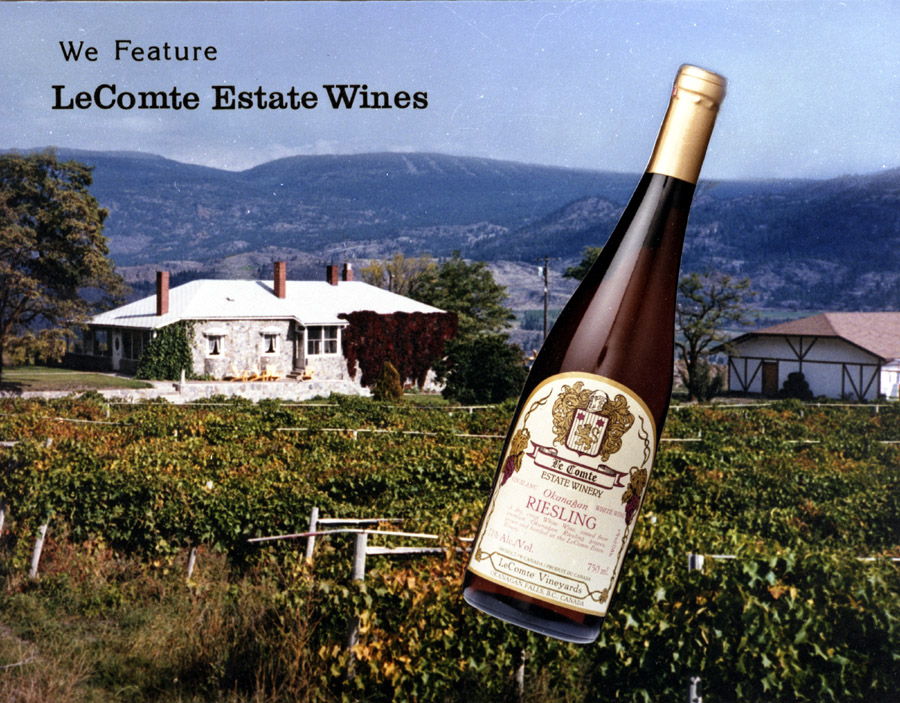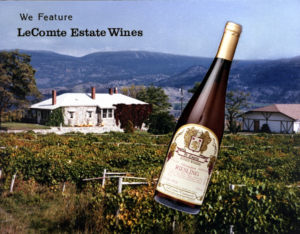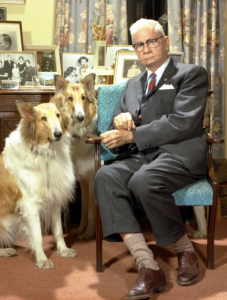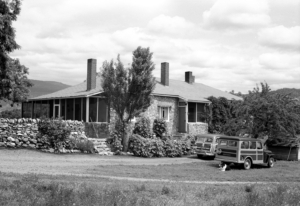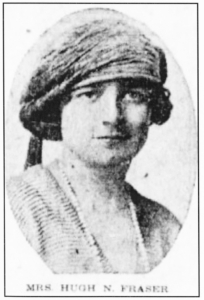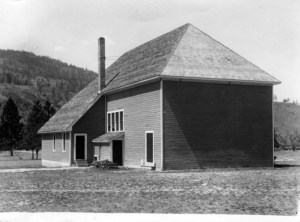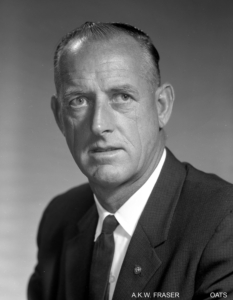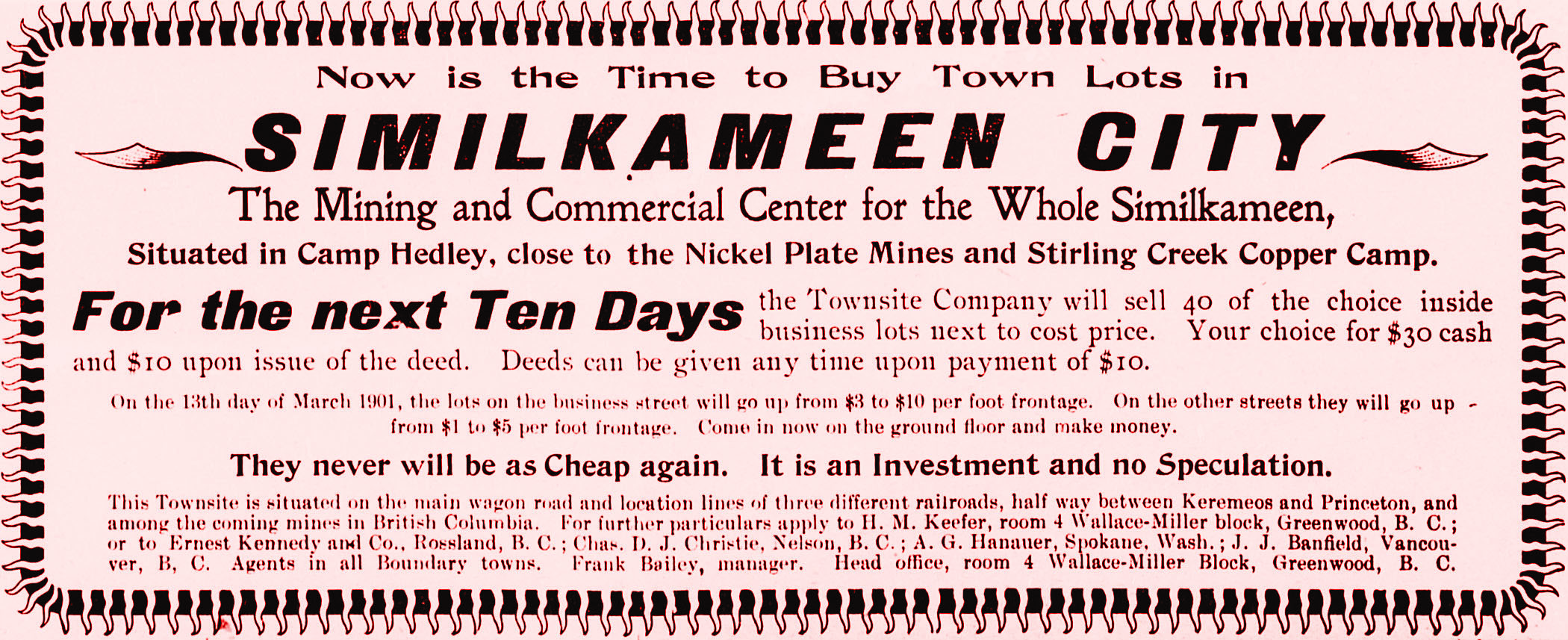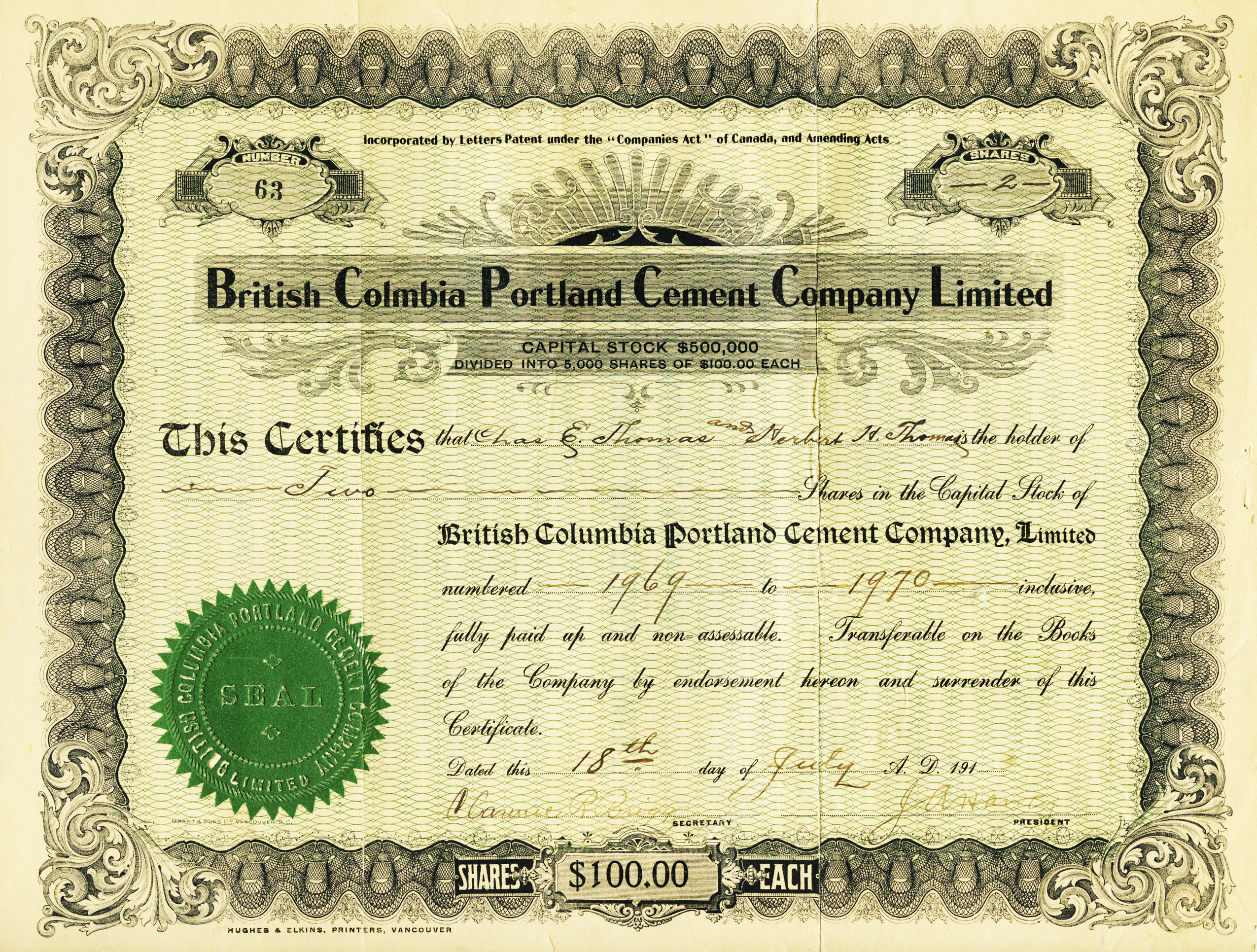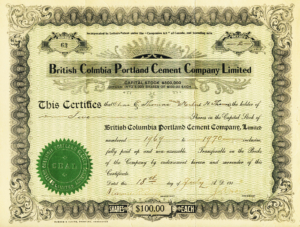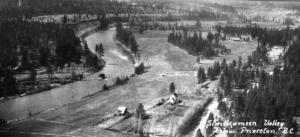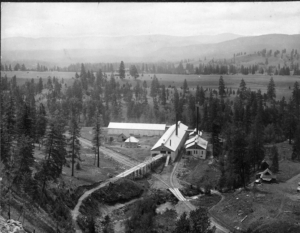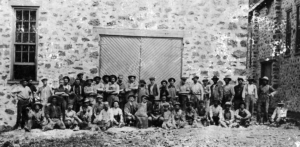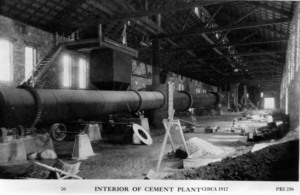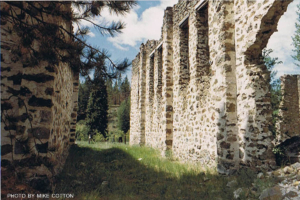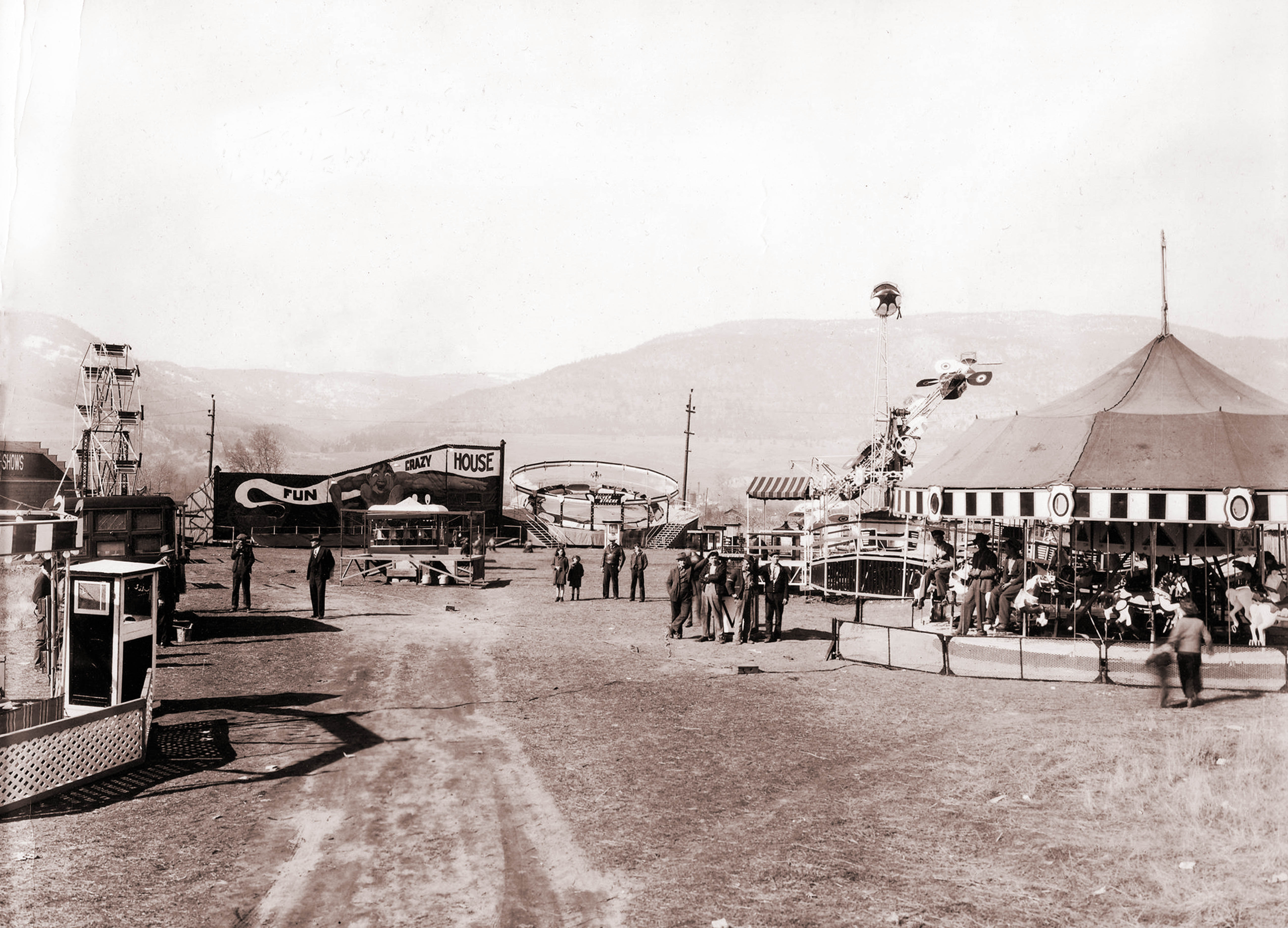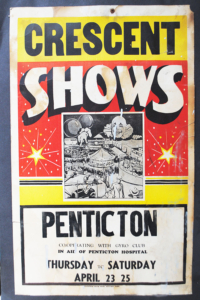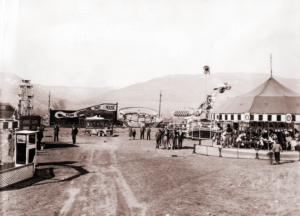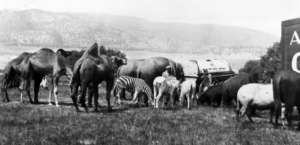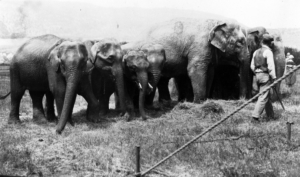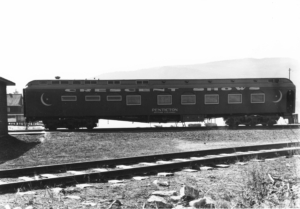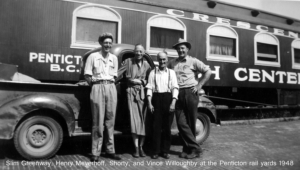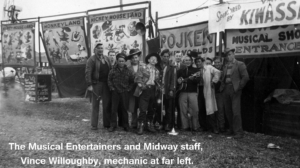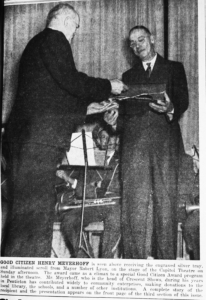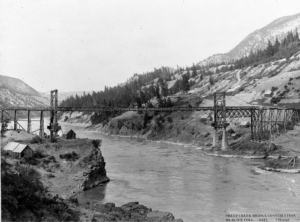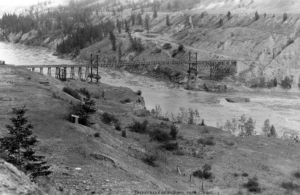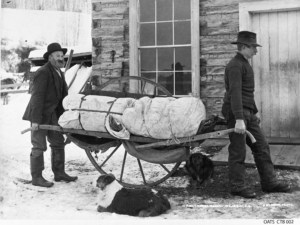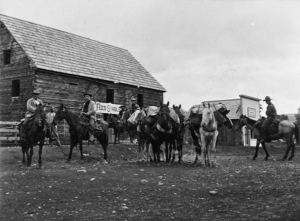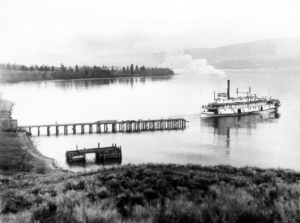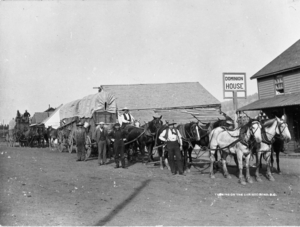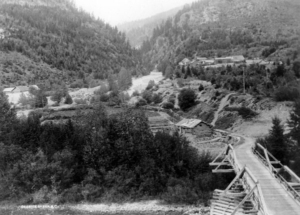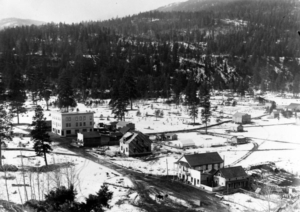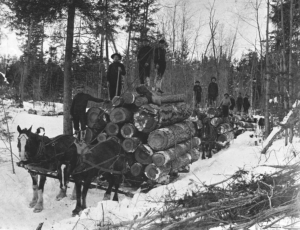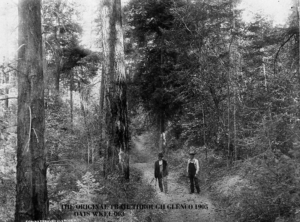Now Is the Time to Buy Lots in Similkameen City, B.C.
by Lori Weissbach
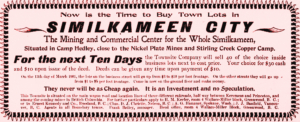
So starts an ad in the Rossland newspaper, The Evening World of August 28, 1903. It continued as follows:
Camp Hedley is the most talked of camp in the province, and situated in the centre is Similkameen City, surrounded by rich mines which will shortly have large payrolls. Over 200 lots have been sold to business people who realize that Similkameen will become the metropolis of this district. The Nickel Plate mines have expended $300,000 in development and are at present building tramways and a 40-stamp mill. Arrangements are being made for the erection of a large smelter at Similkameen City which will cost about a million dollars. Besides the Nickel Plate group of claims being developed by one of the richest mining companies in North America, there are several other groups and properties which will shortly be developed, among them being the Kingston Mines, Rollo, Wellington, Winnipeg, Red Chief, and Pollock. Situated as it is in the beautiful Similkameen valley, midway between Princeton and Keremeos, and protected from all opposition in the valley by adjoining a large Indian reservation, this townsite will become one of the principal mining camps of the Pacific Northwest. It was only a short time ago that lots in Rossland, Nelson, Greenwood and other mining centres were selling for the same price that they are today being sold for in the Similkameen. Come in before the boom and double your money.
SIMILKAMEEN CITY TO HAVE TWO RAILWAYS
The Victoria, Vancouver & Eastern and the Canadian Pacific railways are starting immediate construction for the Similkameen, which will make this town a railroad centre and divisional point, and when these competing lines are completed through to the Pacific coast, they will become the main through lines, being the shortest route from the interior to the coast. A large sawmill is running steadily on the west addition, the only available timber for miles around. The main street is 90 feet wide, being all cleared and ready for building purposes. All railway, roads, telegraph and telephone lines will have to come through this townsite, which is located in the centre of the whole Similkameen valley and will become the largest distributing point and mining centre in British Columbia.
SIMILKAMEEN CITY LOTS WILL MAKE YOU RICH
A large agricultural area to draw from. Pure water, fine climate, rich mine, big payrolls.
LOTS for Sale $2 to $10 Per Front Foot
Agents in All Towns in B.C.-For further particulars apply to:
FRANK BAILEY & CO.,
Greenwood and Similkameen
J.H. YATES,
Empire State Building, Spokane
JAMES H. FLETCHER,
120 Columbia Ave., ROSSLAND
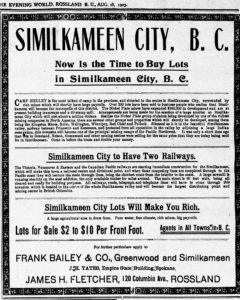
(Ad from The Evening World Rossland, B.C. August 28 1903 – Courtesy of BC Historical Newspapers)
Frank Bailey was born in Mysore, India in 1873.
He became a mining engineer and came into the province of British Columbia in 1896 along with a man by the name of Peter Scott. He visited all the mining camps throughout the Boundary and Similkameen regions.
In August of 1900 he took out a pre-emption on Crown Land bordering the west side of Chuchuwayha Indian Reserve 2A. He obtained Crown Grant 18/110. This became Lot 1968. It consisted of 252 acres.
As yet there was no townsite at Camp Hedley as all of the land in the area was made up of mining claims. A small area at the mouth of Twenty Mile Creek was being held for future building of a smelter. In fact, there were a couple of smelter sites being considered at that time in the area of Camp Hedley. Frank Bailey decided that Lot 1968 would be an ideal place for a townsite to serve all the mining camps nearby. He wanted to call his town “Similkameen City”.
This report from the Greenwood Weekly Times of January 10 1901:
“In the central Similkameen district are Camp Hedley, Sterling Creek, Pearson’s and Riordan’s camps beside Fifteen and Sixteen Mile Creeks. Similkameen City is the principal supply point for this district, and is situated half way between Keremeos and Princeton, on the main wagon road, traversing the valley of the same name. For many years this townsite was unoccupied, under the belief that it formed a portion of Chuchuwayha Indian Reserve, which lies in the centre of Camp Hedley. This proved on a survey being made by Frank Bailey to be inaccurate and consequently he purchased the land from the government and crown granted it. It is now laid off in lots and blocks on modern principals and the coming summer should attract a considerable population.”
Nelson Daily Miner August 4, 1900
Frank Bailey arrived in town last night from the Similkameen. He is interested in the town of Similkameen City, just platted near the mouth of 20-Mile Creek, halfway between Keremeos and Princeton. The famous Nickel Plate group, owned by Marcus Daly, which is now being developed, is on 20 Mile Creek, besides numerous other fine properties. Mr. Bailey thinks the prospect for the future of the Similkameen is decidedly bright.
The Phoenix Miner September 15 1900
“Frank Bailey, owner of the townsite of Similkameen City, at 20 Mile Creek, was in town this week, as enthusiastic as ever over the prospects for that camp. Mr. Bailey is just publishing a well gotten up map of part of the Similkameen, showing all mining claims, camps, roads, trails, rivers, creeks, etc. The map is beautifully lithographed and is issued in connection with a pamphlet giving it a great deal of valuable information about the Similkameen. The pamphlet will be out in a few days and will be for sale by all news dealers.
Nelson Daily Miner November 9 1900
The announcement made by the Hon. J. A. Turner, Minister of Finance, that the Provincial Government had in view the construction of a line from the boundary District to Penticton at the foot of Okanagan Lake, so as to connect with the Canadian Pacific Railway service on that lake and its branch from the north end of Sicamous, on the mainline, has again directed attention to the possibilities of the mineral resources of that section of the Yale district known as the Similkameen.
One of the most enthusiastic believers in the richness of the many camps of that district is Frank Bailey of Similkameen City. With a view to directing attention to this section, Mr. Bailey has published an accurate map of a part of the Similkameen, embracing a dozen or more of the best-known camps. Speaking of the district he said, “I anticipate much travel next year into the Similkameen. This past season many claims have been partly developed and an effort has been made to attract capital our way.
Already a number of townsites have been placed on the market among them Keremeos, Olalla, Princeton and Similkameen City, and with the opening up of the country they are bound to forge ahead.
One of the best-known camps, situated at the heart of the district is Camp Hedley. The most important property in this camp is the Nickel Plate. Besides the Nickel Plate there are 8 important groups of claims east of 20 Mile Creek. But there are many others that are on the west side of the Indian Reserve and 20 Mile Creek.
This camp is easily reached from Similkameen City, which is situated on the main wagon road 23 miles southeast of Princeton and 22 miles northwest of Keremeos. Its location comprises several large flats, which extend from the base of the mountains in the fan-shaped area on a gentle slope to the Similkameen River. There is also an abundance of pure creek water for domestic purposes. The townsite company is installing a sawmill plant and making extensive preparations to build up the place.
The adjacent mining belt is 80 miles wide, running for over 40 miles in a northwest direction from Copper Mountain to Bullion Mountain. It includes Camp Hedley, Stirling Creek camp, Pearson’s camp and Twenty, Eighteen, Sixteen and Fifteen Mile Creeks. All these have a number of first-class mining properties and a large extent of high- grade ore in sight. The ores of the district are chiefly arsenical iron, which in Camp Hedley runs high in gold and silver, but in the other camps the ores are chiefly chalcopyrite, carrying good gold values.
Sterling Creek, Pearson’s and Stray Horse camps are principally copper camps, whereas Camp Yuniman is nearly all quartz, carrying free gold in paying quantities. The copper ores are usually combined with sufficient lime, silica and iron to make them self-fluxing. There are several good smelter sites in Camp Hedley, and as the mountain sides are steep, being on a 60 per cent slope on Twenty Mile Creek, all the ores will probably eventually be treated in the valley below Similkameen City, which adjoins the Indian Reservation.”
PROGRESS AT SIMILKAMEEN CITY
The Greenwood Weekly Miner reported on April 27 1901 that the latest news of the Similkameen came in yesterday by Frank Bailey. “I had a pleasant three weeks trip all through the country. On arriving at Fairview, I found a large number of the old timers had already left for Camp Hedley. There is a good wagon road as far as 16 Mile Creek. Thos. Bradshaw of 15 Mile Creek, is doing a good business taking care of the weary travellers who are coming in from all parts, principally from Spokane, via the Okanagan Valley. Mr. Bunt, of Penticton, has made the final arrangements to run a tri-weekly stage line from Penticton to Princeton, the distance is about 60 miles, and he will change horses at White Lake, Keremeos, Bradshaw’s Hotel, 15 Mile Creek, Similkameen City, Bromley’s and Princeton. The wagon road is expected to be completed in May. There are at present two gangs working towards Similkameen City to connect with the other end of the road at 16 Mile Creek. When this road is completed, it will be one of the longest wagon roads in the province.
The farmers in the Similkameen Valley have finished seeding and the fresh green grass can be seen everywhere; but up in the mountains there is still five feet of snow. The old timers and Indians say it is a very late spring, and that there will be high water in the creeks and rivers about June.
On 20 Mile Creek, D. Hackney has opened up his hotel. There is also a log cabin under construction.
At Similkameen City, J.N. Rear, of Lindsay, Ont., is installing a $5000 sawmill and expects to start to cut lumber by the middle of May. Campbell & Co. have erected a shingle mill and can supply shingles on the townsite for $4 per thousand. Mr. Rear says that with the amount of saw logs around this townsite, he can supply lumber at $15 per thousand. Messrs. Taylor and Kinchler are erecting a log hotel. Messrs. Oliver and Tetherstonhaup are building an assay office and as soon as lumber is available the townsite company will build a block.
Quite a large number of prospectors and strangers are camped on the townsite, the reason being that several rich, new strikes have lately been made on the mining properties adjoining, and on Sterling Creek on the opposite side of the Similkameen River. The most important groups of properties close to the townsite are the Pollock group of four claims. The Wilson group of five properties is located on the same mountain opposite Similkameen City, but situated higher up the mountain.
Mr. Rear, the sawmill man, has got permission from the government to run a ferry across the Similkameen River and has been supplied with cables, etc. from the government to connect the mines with the townsite, as in high water one has to cross over in a boat.
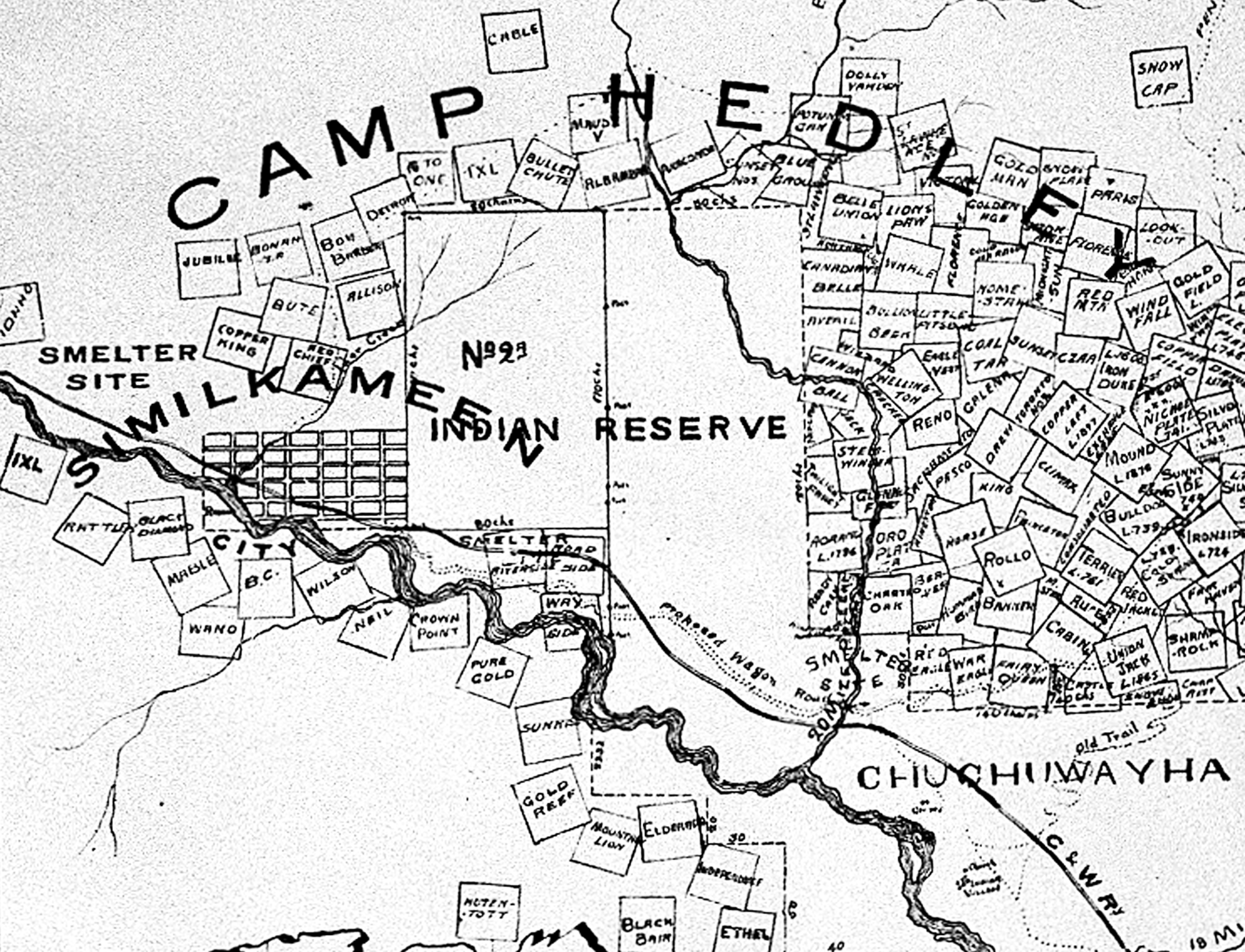
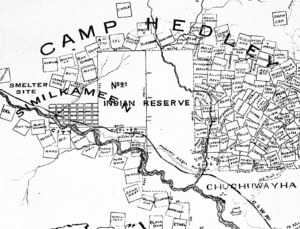
Boundary Creek Times September 2, 1904
In June 1904 there was a government auction of lots for the Hedley townsite. Mr. C.A.R. Lambly was auctioneer and Frank Bailey was clerk. A large number of the lots were sold, most of them averaged $100 each. The sale lasted 2 days, June 27th and 28th and the provincial government realized nearly $12,000. Mr. Bailey managed to snap up a whole block of lots well situated. He comments that “most of the people have great faith in the Similkameen townsite, however it is hard to tell which of the many townsites in the Similkameen will become cities when transportation arrives. Princeton will undoubtedly become the metropolis for the upper Similkameen, while I think Keremeos will become a large distributing point for the lower Similkameen, and we expect Similkameen City will become the mining centre for the middle Similkameen on account of its typographical situation and its close proximity to the rich mines.”
The Hedley Gazette’s first issue was on January 19 1905 and it went on to say:
THE NEW TOWN OF HEDLEY
The Youngest and Largest in the Similkameen District
“The last shall be first” is a prophecy that is being fulfilled in Hedley’s case so far as its relative importance with other centres of population in the Similkameen riding is concerned, for it is at once the largest and youngest town in the riding.
It was only in 1900 the discovery was made that the ground at the mouth of Twenty-mile canyon was not part of the Indian reservation, when it was at once staked as two mineral claims—the Kimberley Fraction and the Mafeking. The favourable showings as development at Nickel Plate progressed, pointed unmistakably to the possibility of a town, and these two mineral claims were purchased by a local syndicate, consisting of Messrs. R.H. Parkinson, E. Bullock-Webster, C.E. Oliver and others, who with town siting in view, proceeded at once to obtain a crown grant and surface rights. The ground was surveyed by Mr. Parkinson, platted as a townsite, and placed on the market under the name Hedley, being called after manager Hedley, of the Hall Mines smelter at Nelson, B.C. A considerable number of lots were disposed of mostly to parties resident in Spokane and Republic.”
From then on, we only hear of a couple of ventures happening at Similkameen City.
One was the Hedley Brewery, owned by Diller and Louis Scherbauer. An ad appeared in the Hedley Gazette with the date of July 18 1910, for a Liquor Licence to be granted to the Hedley Brewery situated near Hedley B.C. The brewery was eventually sold to Princeton Brewing about 1912. A story in the February 22, 1912 Hedley Gazette said: W. Thomas, representing the Princeton brewery was in town last week in the interests of that business which has extensive trade with the Hedley hotels. Louis Scherbauer, formerly of the Hedley Brewery before it was absorbed by the Princeton concern, is now the brewer at Princeton while Mr. Thomas is business manager.
The other venture in Similkameen City was the Park Hotel, owned by John Cosgrove, who previously owned the Valley Hotel at Ymir. In March 1907 Mr. Cosgrove had an ad to sell the hotel, but permission for Liquor Licence Grants concerning the Park Hotel, under owner John Cosgrove, showed up in the paper consistently until January 1912. Then it was reported that John Cosgrove’s Park Hotel did not receive a renewal licence. It is presumed that the reason for cutting off the licence was failure to make the alterations specified by the chief licence inspector on his official visit. According to the Hedley Gazette of July 9 1914: “Mr. J. Cosgrove has installed a gasoline engine and pump at his place up the river and it is now in first-class working order and is giving the utmost satisfaction. He is able to get as much as six hundred gallons an hour up on the flat at his residence. He has a small garden planted up at his place and next year intends to get more land under cultivation.”
A Few Other Snippets:
Hedley Gazette May 4, 1905
John Cosgrove is to obtain the honour of the first building in Similkameen City. He is putting up a hotel there.
Hedley Gazette October 5, 1905
It is reported that Similkameen City is to have a brewery in the near future.
When this becomes an accomplished fact, the town will enjoy the distinction of being what the Scotchman calls a slockened place in the country, for it will have only two houses, one a hotel and the other a brewery.
Hedley Gazette November 9, 1905
Diller and Scherbauer are getting along with their brewery at Similkameen City, and will be turning out hi-yu schnapps before any others can get started.
Hedley Gazette January 4, 1906
The brewery of Diller and Scherbauer is almost completed.
Phoenix Pioneer September 14, 1907
Where are they now? Frank Bailey, he of Similkameen City fame, who sold lots of lots in his townsite near Hedley, to innocents years ago, is said to be laid up in Hedley or Princeton.
Frank Bailey moved into the Aspen Grove and Merritt area and was living there at the time of his marriage to Hilda Rose Winkworth Scott, who was 10 years younger than him. They were married in Vancouver.
About 1913 he published a wonderful book on our area called “Nicola Similkameen and Tulameen Valleys—The Richest Section of British Columbia”. He died in Deroche B.C. on December 21 1935.
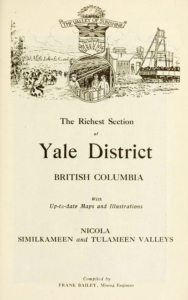
John Cosgrove was born in Ontario and he died on February 21 1937 at the age of 78. Mr. John Cosgrove would seem to be the only person who could claim to ever have lived at Similkameen City and run a successful business. He thrived there for many years.
Just as Frank Bailey believed it should be.
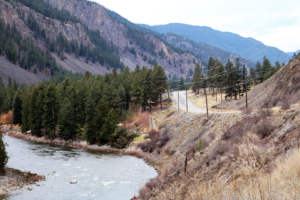
Lori Weissbach is a researcher and board member of the Princeton Museum and Archives as well as a contributing editor to the Okanagan Archive Trust Society.
